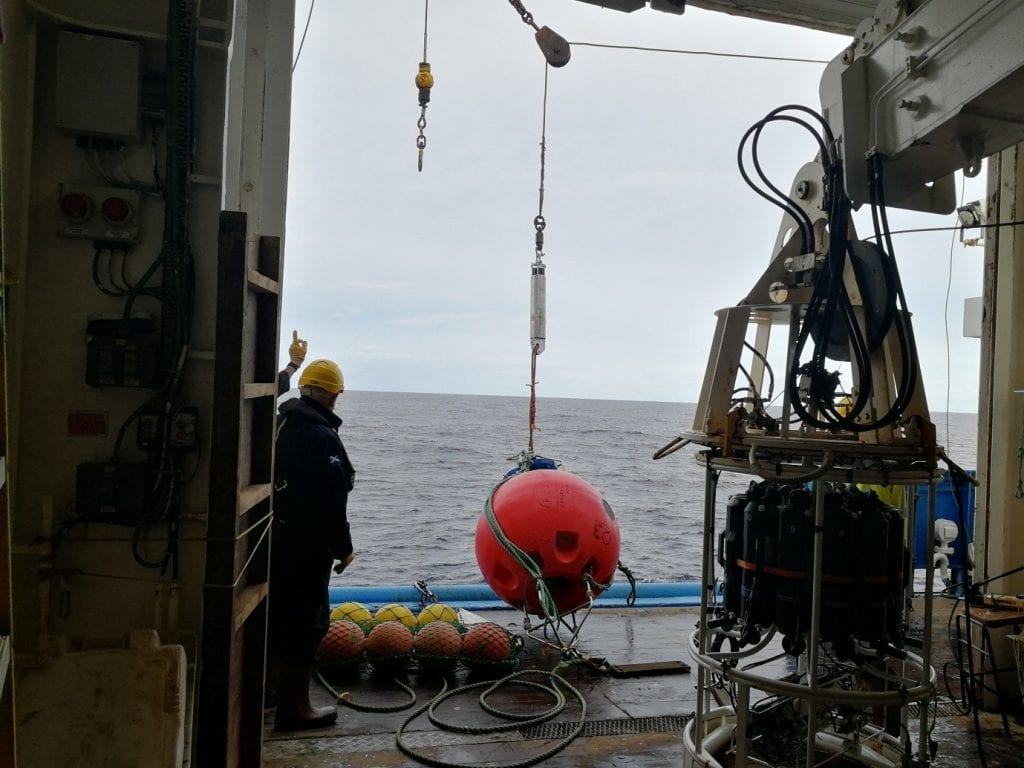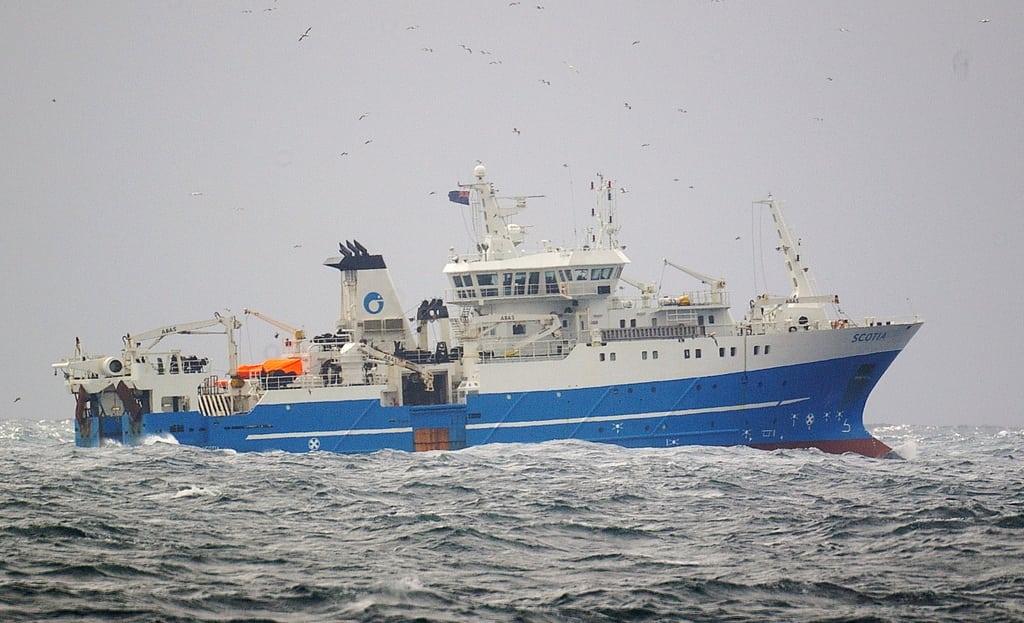Marine
Water Sampling for Long-Term Monitoring – An Update 09/10/18
October 16, 2018 by Marine Directorate Communications No Comments | Category Marine Directorate general, Marine Directorate Science, Marine Directorate Surveys, Oceanography, Research Vessel Surveys
Scotia left harbour at 09:00 on Friday 5 October. Our first objective was to deploy the Conductivity, Temperature and Depth (CTD) profiler at 18 stations along a line at 57° N going west from the Scottish East Coast to 2°E. Along with salinity (conductivity) and temperature, we measured dissolved oxygen, turbidity and fluorescence. We also took water samples through the water column to calibrate the sensors and measure the nutrient content of the water. These measurements were made in support of the AlterEco project; studying how changing physical and chemical conditions are affecting the marine ecosystem and health of UK shelf seas.
The CTD transect was completed in just under 24 hours and we made our way to the JONSIS CTD section in the northern North Sea. The Scotia visits the JONSIS section three times a year to monitor the annual, and inter-annual, variability. After completing the JONSIS section, we made our way to the Faroe-Shetland Channel to recover and service a mooring on the continental shelf slope in 450 m water depth. The mooring is deployed on the seabed and contains an upward looking Acoustic Doppler Current Profiler (ADCP) which continuously measures the velocity of the current through the water column, from the seabed to the water surface. In order to recover the mooring, which is sub surface, an acoustic release was used. We successfully recovered the mooring, downloaded the data, serviced, and redeployed the mooring this morning.
We are now sailing to north Shetland to start a long CTD transect across the Faroe-Shetland Channel. This line will take us over the shelf edge into water depths of approximately 1400 m and over to the Faroe Islands. This section of water is an important region for exchange between the Arctic and Atlantic, with cold and fresh water flowing southwards at the bottom and relatively warm salty water flowing northwards at the surface. The combination of ADCPs and repeated CTD transects allows us to monitor the transport of these different water masses.
 The ADCP mooring being deployed over the starboard side of Scotia and the CTD instrument frame, equipped with 12 water sampling bottles, standing on deck.
The ADCP mooring being deployed over the starboard side of Scotia and the CTD instrument frame, equipped with 12 water sampling bottles, standing on deck.
Further Information:
Tags: AlterEco project, Faroe Islands, Faroe-Shetland, Monitoring, MRV Scotia, oceanography, research, sampling, science, Scotia, Shetland, Survey



Leave a comment